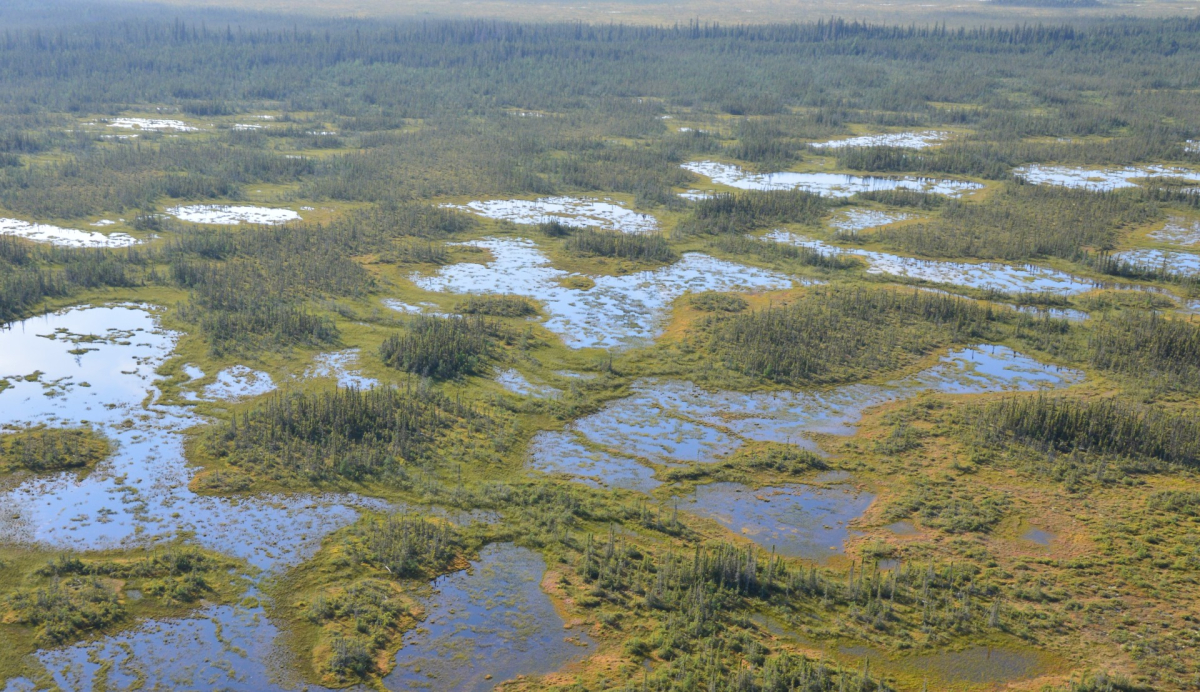Support strong Canadian climate journalism for 2025
As the United Nations biodiversity conference draws near, dozens of scientists from 13 countries are calling for protection of the world’s waterlogged, carbon-rich peatlands, a quarter of which exist within Canada’s borders and are threatened by development.
Canada’s peatlands store about 150 billion tonnes of carbon, the most common heat-trapping element in the atmosphere responsible for global warming. If we were to lose just one per cent of that stored carbon, global greenhouse gas emissions would increase by 11 per cent, said Lorna Harris, the lead author of the statement and a forests, peatlands and climate change scientist at Wildlife Conservation Society Canada. Canada’s peatlands span northern Manitoba, Quebec, Alberta and Ontario as well as throughout the Northwest Territories and Yukon.
“That's what's at stake,” Harris told reporters at a Zoom press briefing on Dec. 1. For years, the peatlands of the Hudson Bay Lowlands in Ontario have been under threat of mining development. Ontario Premier Doug Ford wants to develop a 5,000-square-kilometre mineral deposit in the area called the Ring of Fire, which could impact an estimated 450 million tonnes of carbon and presents a “huge risk to Canada's climate targets,” said Harris. Most of Canada’s peatlands sit on the traditional territories of Indigenous nations, including the Hudson Bay Lowlands, which is one of the largest concentrations of peatlands in the world, second only to the West Siberian Lowland in Russia.
Peatlands make up only three per cent of the Earth’s land surface, but their soils contain more than 44 per cent of all soil carbon, making these landscapes a larger carbon sink than all the world’s forests combined, according to the International Union for Conservation of Nature.
The 40 scientists involved in the statement are raising the alarm about two massive threats to preserving these climate-crucial landscapes: development of the Ring of Fire and the Democratic Republic of the Congo’s decision to open up parts of the Congo Basin peatlands to bids from oil and gas companies.
Peatland ecosystems are emblematic of how climate change and biodiversity loss are inextricably linked. In Southeast Asia, for instance, 45 per cent of mammals — like the critically endangered orangutan and Sumatran tiger — and 33 per cent of birds that live in tropical peat swamp forests are near threatened, vulnerable, or endangered, according to a 2011 study published in BioScience.
“These remote landscapes are so big, they are some of the last places that we have migratory caribou, wolverine and migratory birds … so keeping these places intact, protecting them and valuing them is really, really important,” said Harris.
Harris said she will be at COP15, the UN biodiversity conference, advocating for peatlands to be included “very clearly” in the final text of the post-2030 global biodiversity framework, which will guide global action on conserving biodiversity.
Natasha Bulowski / Local Journalism Initiative / Canada’s National Observer







Comments
Thanks for this article. What it does not mention is that the threat of develop in the peatlands is the most minor of outcomes. If the temperature in the peatlands and permafrost areas rises due to planetary emissions and increased global temperatures, it could release carbon on such a vast scale that the Earth might no longer sustain life for most species. This is why any increases of the global temperature over the target of 1.5 C must be resisted. Whining about the cost and inconvenience of action is simply foolish.